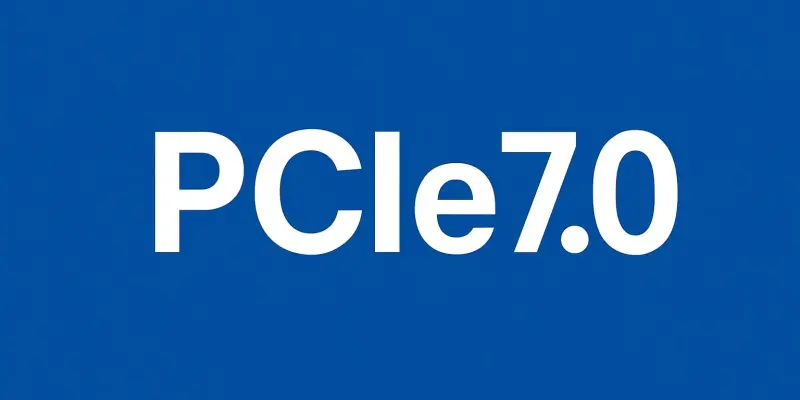The tech industry is abuzz with excitement as PCI-SIG, the consortium responsible for standardizing and advancing PCI Express technology, unveils the PCIe 7.0 specification. This introduction represents a monumental leap in data transfer capabilities, achieving an unprecedented 128.0 GT/s. This enhanced transfer rate is poised to revolutionize the way data-driven applications, including AI, machine learning (ML), 800G Ethernet, cloud-based solutions, and quantum computing, operate. With the ability to deliver an astounding 512 GB/s bi-directional bandwidth via an x16 configuration, PCIe 7.0’s power efficiency and backward compatibility with earlier PCIe generations promise to usher in a new era of technological growth.
The Evolution of PCIe 7.0
Breakthrough Transfer Capabilities
The arrival of PCIe 7.0 marks a significant milestone in the trajectory of interconnect technology, both in terms of speed and efficiency. This development is tailored to meet the burgeoning demand for higher compute and networking capabilities across various sectors. Among its most compelling features is the utilization of PAM4 (Pulse Amplitude Modulation with 4 levels) signaling combined with Flit-based encoding. This combination enhances data transfer rates while ensuring energy efficiency, a critical consideration for maintaining sustainable tech operations. The exponential growth in data demands, fueled by trends in AI and ML, has made such innovative advancements not only desirable but necessary for the evolution of digital infrastructure.
The technological enhancements presented by PCIe 7.0 resonate well within the broader context of digital advancement over the past two decades. Data centers and ASIC companies are particularly poised to embrace these changes, integrating this high-bandwidth, low-latency technology into their systems. This adoption is crucial for maintaining leadership in high-performance computing and processing-intensive environments, enabling seamless experiences in data-heavy applications. The planning and anticipation of support for these advanced PCIe specifications underpin an industry’s drive to adopt cutting-edge tools that support their evolving infrastructural needs, reinforcing PCIe’s longstanding dominance in high-speed interconnects.
Progress in Bandwidth Expansion
A driving force behind PCIe 7.0 is the industry’s unwavering push towards expanding bandwidth capabilities, ensuring robust support for new and anticipated technological applications. The specification’s 128.0 GT/s transfer rate signifies PCIe’s commitment to staying at the forefront of technological innovation, improving upon previous iterations while accommodating future demands. Companies are increasingly relying on such advancements to remain competitive, providing quicker data processing, better connectivity, and enhanced software applications in a tech landscape that caters to more data-intensive workloads.
While maintaining backward compatibility, PCIe 7.0 seamlessly integrates with existing systems, offering flexibility for organizations to transition at their preferred pace. This compatibility ensures that businesses are not forced into immediate overhauls but can strategically implement the new specification as part of ongoing technology upgrades. Such adaptability is key to the successful rollout of PCIe 7.0 across various industries, especially those at the cutting edge of data center operations and AI research. The alignment of these innovations with industry trends highlights an all-encompassing approach that addresses both current and future technological requirements.
Emerging Optical Interconnects
Advancing Industry Standards
The PCI-SIG’s introduction of an optical interconnect specification revision epitomizes the industry’s strategic vision for future-ready information technology. Through the Optical Aware Retimer Engineering Change Notice (ECN), this revision offers provisions for deploying PCIe over optical fibers. By bridging existing electrical technologies with emerging optical domains, this specification supports seamless integration across racks and pods. Enhanced mapping and multiplexing abilities are anticipated to streamline operations and boost data flow efficiency, meeting the intricate demands of modern computing. This shift towards optical interconnect solutions underscores a standardized industry approach to communication technologies. While traditional copper-based connections serve numerous applications well, the move to optical frameworks represents a transformative phase in achieving superior bandwidth and reduced latency. Such technological growth, encompassing a holistic view of networking infrastructure, presents promising ramifications for sectors ranging from cloud computing to AI-driven innovations. The impending widespread integration of optical solutions is anticipated to enhance network agility, supporting the progressive strides PCIe has continually achieved.
Filling the Technological Gaps
The optical interconnect specification signifies more than a technological enhancement; it creates an avenue for addressing the existing gaps in data transfer and connectivity. These existing bottlenecks hinder the pace at which high-performance computing systems can operate. By providing an upgrade path that incorporates optical technologies, the industry readies itself to face the increasingly sophisticated requirements of future applications head-on. This empowerment of next-generation technology ensures that companies can capitalize on PCIe advancements while catering to escalating data needs.
By continuing to push the envelope, the PCI-SIG positions itself at the cutting edge of technological adoption. This proactive stance sets a foundation for future PCI Express developments and aligns with the industry’s strategic growth path. The collective focus on innovation, compatibility, and forward-thinking solutions reflects ongoing efforts to capitalize on possibilities created through advanced interconnect configurations. The journey toward PCIe 8.0 is already underway, laying the groundwork for the next wave of computing achievements and supporting industries primed for continual digital transformation.
The Road Ahead for PCIe Technology
The tech industry is buzzing with anticipation as PCI-SIG, the influential group responsible for standardizing PCI Express technology, rolls out the PCIe 7.0 specification. This unveiling marks a significant milestone, offering a groundbreaking data transfer rate of 128.0 GT/s, which has the potential to transform data-centric applications. From artificial intelligence and machine learning to 800G Ethernet, cloud-based innovations, and quantum computing, PCIe 7.0 promises to change the game. Thanks to its x16 configuration, it delivers an incredible 512 GB/s bi-directional bandwidth, highlighting its power efficiency. Furthermore, it maintains backward compatibility with previous PCIe generations, ensuring a smooth transition for existing technologies. This development heralds an exciting new chapter for technological progress, offering robust advancements in efficiency and speed that can fuel growth in an ever-evolving digital landscape, promising enhanced performance and capabilities across various domains.

